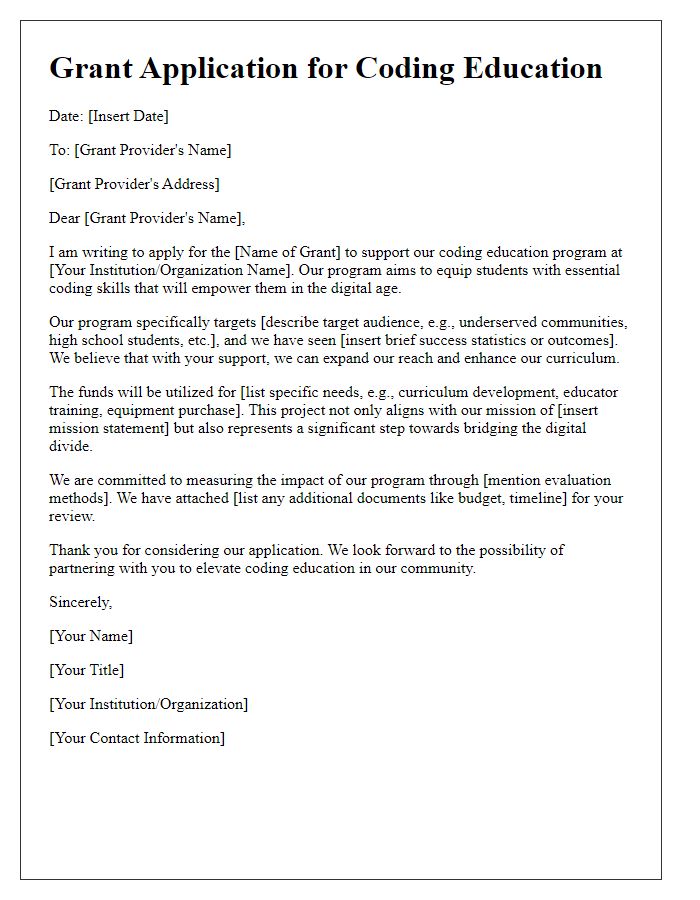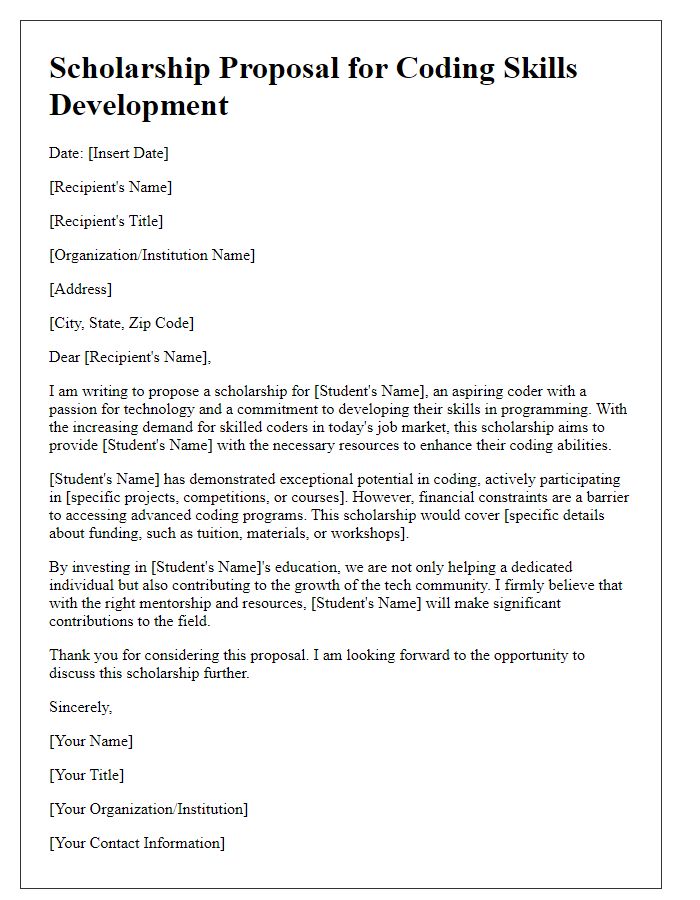Are you passionate about coding and looking for ways to enhance your skills or help others learn? Securing a grant for coding education can open doors to exciting opportunities and transform countless lives. In this article, we'll explore effective strategies to make your grant application stand out, from identifying the right funding sources to crafting a compelling narrative. Join us as we dive deeper into the world of coding education grants and discover how you can take the next step in your journey!

Clear objective statement
The objective of this grant proposal is to secure funding for a comprehensive coding education program aimed at equipping underprivileged students in urban communities, specifically in locations such as Chicago and Los Angeles, with essential programming skills, such as Python and Java. The program intends to enroll 200 students aged 12 to 18 over a span of six months, offering a curriculum designed to foster critical thinking and problem-solving abilities through hands-on project-based learning. With successful completion, students will gain exposure to potential career paths in technology while also receiving stipends for attendance and participation, thus reducing barriers to entry and increasing access to the tech industry. This initiative contributes to closing the opportunity gap in STEM (Science, Technology, Engineering, and Mathematics) fields for marginalized groups, aligning with national efforts to promote diversity in technology.
Program details and curriculum
The coding education program, designed for students aged 10 to 16, spans 12 weeks and focuses on interactive learning using Python, a popular programming language. Each week includes hands-on projects, coding challenges, and collaborative activities. The curriculum covers fundamental concepts such as variables, loops, and functions, progressing towards more complex topics like object-oriented programming and web development basics. By the end of the program, participants will have developed a portfolio comprising completed projects such as simple games and websites, ensuring they have practical experience to complement theoretical knowledge. Additional resources, including online tutorials and coding competitions, will be provided to enhance students' learning experiences.
Target audience and demographics
Coding education programs can greatly benefit underserved communities, particularly in urban areas like Los Angeles, California, where approximately 20% of residents live below the poverty line. Target audience includes adolescents aged 14-18, especially from minority backgrounds, where statistics show only 20% pursue STEM-related careers. By offering coding workshops and mentorship opportunities, programs can reach over 500 students annually, fostering computer programming skills needed in the job market. Additionally, focusing on partnerships with local schools, like John Marshall High School, aims to bridge the digital divide, providing resources to communities lacking access to technology. By addressing socio-economic barriers, initiatives can empower youth, create career pathways, and cultivate a more diverse tech workforce.
Measurable outcomes and impact
The implementation of coding education programs in underserved communities, specifically focusing on high school students aged 14 to 18, aims to achieve measurable outcomes such as increased proficiency in programming languages like Python and Java. Over a two-year period, the program expects to enroll at least 200 students annually, with a targeted 75% achieving competency levels benchmarked by standardized assessments. Additionally, participants will have the opportunity to complete real-world projects, contributing to a portfolio that enhances college applications and job readiness. By the end of the grant period, at least 50% of graduates will report securing internships or entry-level positions in tech companies within three months post-completion, fostering a tangible impact on their career trajectories. Furthermore, an annual community showcase event will highlight student projects, driving engagement with local tech businesses and inspiring younger students.
Funding request and budget breakdown
Funding requests for coding education programs often highlight the necessity of technology and resources needed for effective learning. Essential items may include computer hardware, software licenses, and educational materials. Breakdown of the budget could encompass costs for coding software platforms such as Scratch or Python, training for instructors, classroom equipment like laptops (typically costing around $800 each), and subscriptions to online learning resources. Additionally, potential expenses may involve field trips to tech companies in Silicon Valley or guest speaker fees from industry experts, significantly enhancing the learning experience for participants. Collaboration with local schools or community centers may further extend outreach efforts, ensuring a diverse range of students gain access to coding education.













Comments